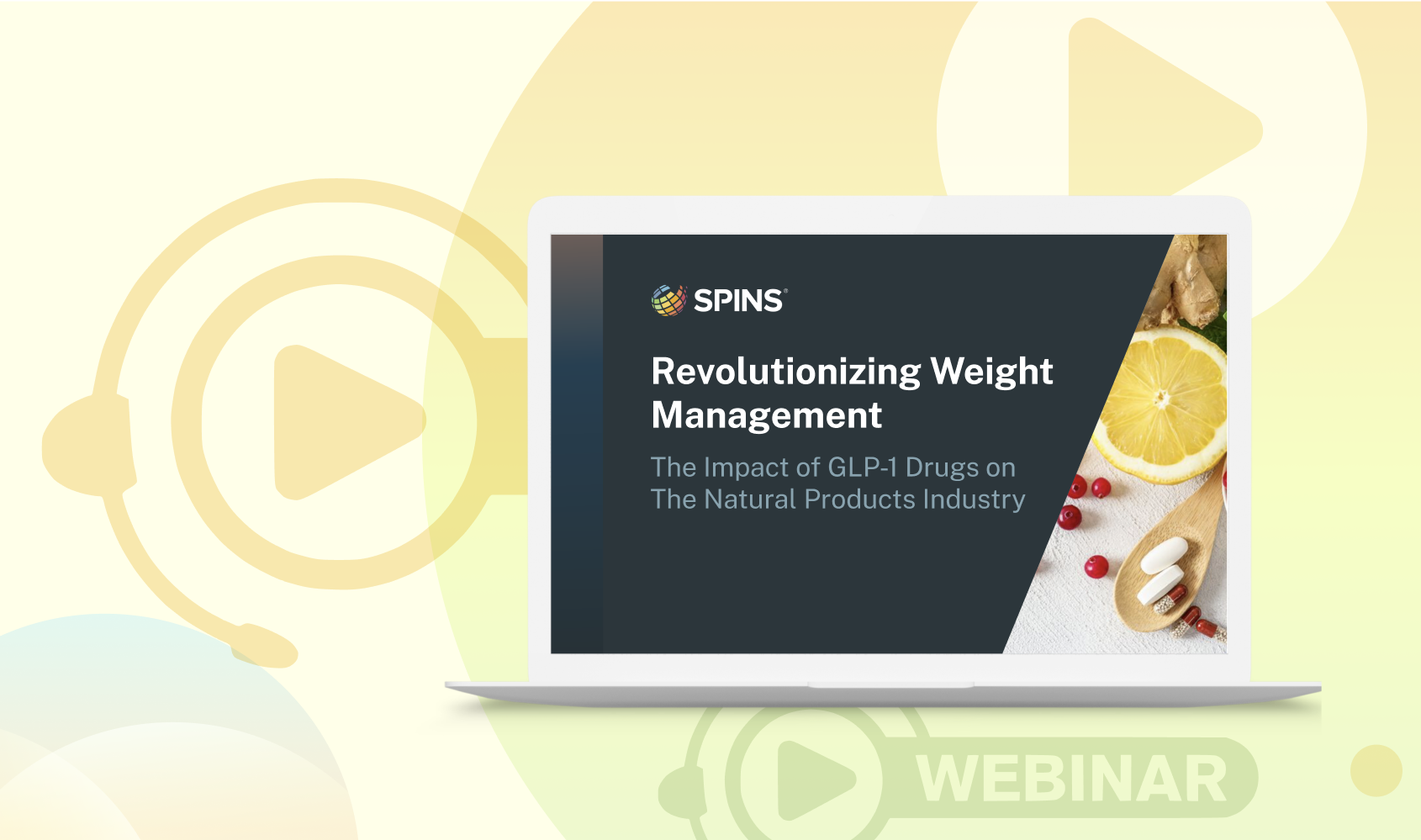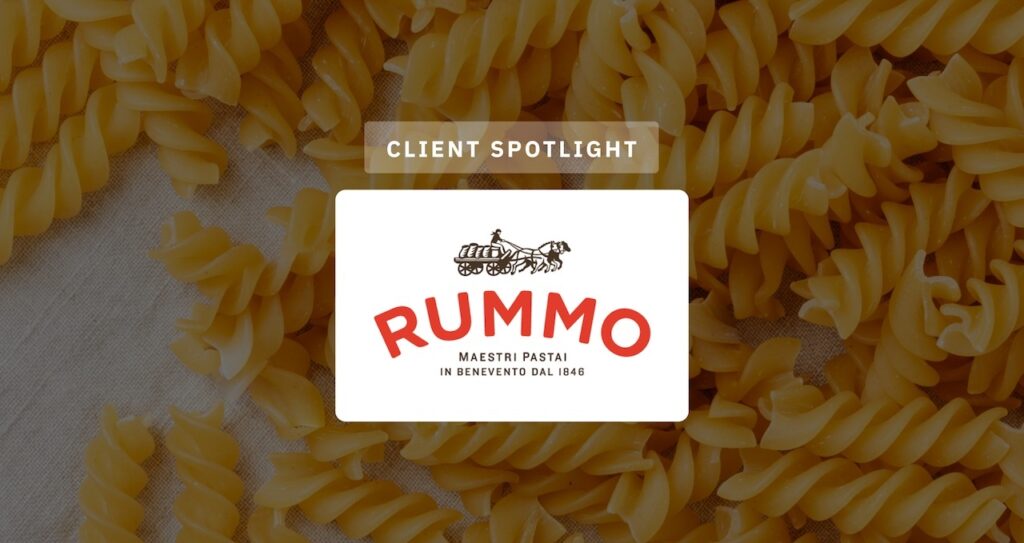The Shifting Landscape of Artificial Colors
In January 2025 the FDA released a final judgment to ban FD&C Red No. 3 and eliminate it from shelves by the end of 2027. In April 2025, the HHS and FDA introduced a plan to phase out petroleum-based synthetic dyes in the United States’ food supply, along with banning two additional synthetic dyes and requesting an acceleration of the Red No. 3 ban.
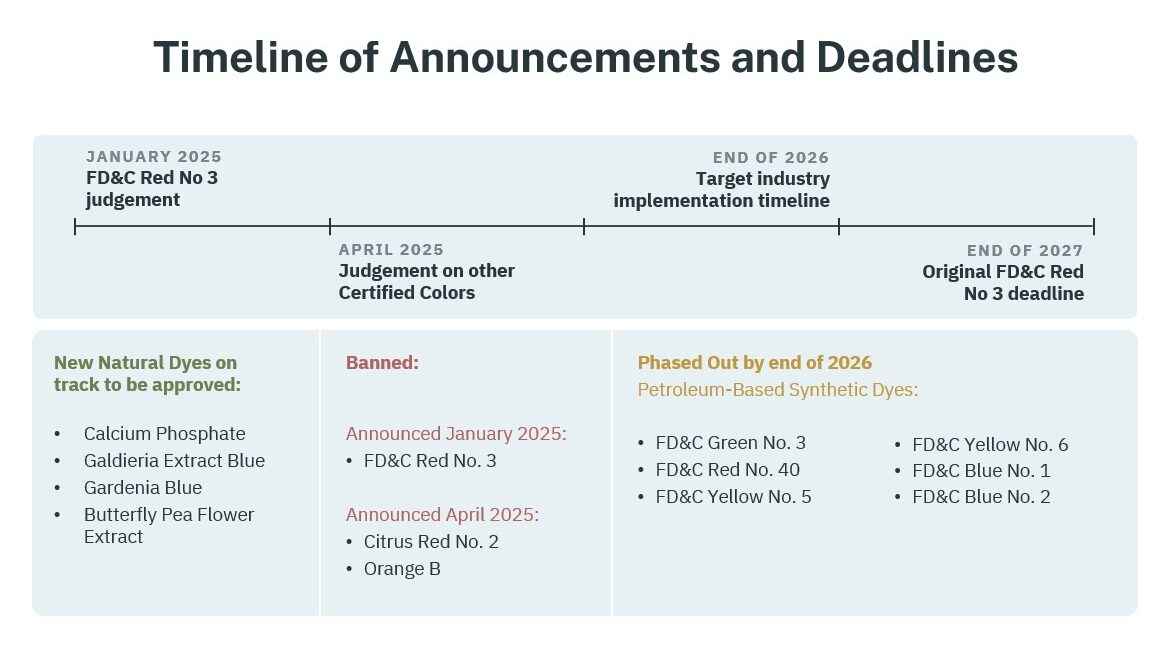
Brands and companies must make pivotal decisions at this time, and SPINS Product Intelligence can guide the way from federal regulations and guidance all the way to better-for-you shopper preferences.
Using SPINS’ best-in-class attribution, we can identify the shift in consumer trends and needs across aisles. Looking at the past 3 years of products containing artificial colors, we can see a downward shift in dollar sales. Shoppers are looking for better-for-you products to stock their pantries and nourish their families.
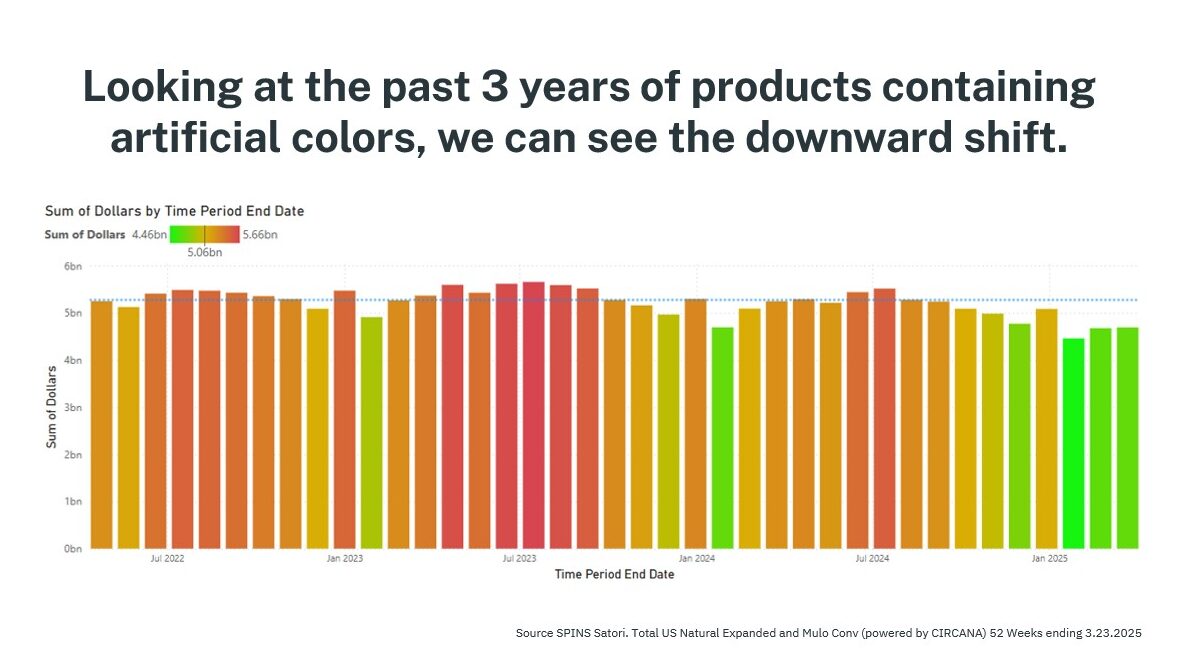
[PDF] Color Me Red: The Shifting Landscape of Artificial Colors
Access the full reportWhat do you need to know to be prepared?
Q. What are petroleum-based synthetic dyes?
A. Petroleum-based synthetic dyes are a subset of synthetic colors (also known as Artificial Colors) that are derived from petroleum. They’re used widely due to their uniform and vibrant color and are approved for use across foods, drugs, and other consumables.
Outside of the United States, these synthetic dyes have long been controversial, even requiring a health warning label on food products in the European Union.
Q. Why are synthetic dyes a concern?
A. Some studies show adverse effects of several synthetic colors, including irritability and restlessness in children, and to increased risk of cancer. They are also considered indicators of Ultra Processed Foods (UPFs), which shoppers are increasingly aware of when making purchase decisions.
Q. Can other natural ingredients be used as food dyes?
A. Yes! Ingredients such as beet powder, annatto extract, paprika, oleoresin, and spirulina can be added to food products as sources of naturally derived color. These types of colors are not synthetic and are derived from a natural food source.
Red No 3 Across Aisles
With a January 2025 announcement, the Red No. 3 ban leads the shift in Artificial Colors.
Red No. 3 is present in a large but shrinking set of products as brands gear up for the FDA judgment, and additionally, more shoppers are checking labels. Across Food & Beverage, products that contain Red No. 3 are already seeing a steep decline in both dollars and units percent growth vs a year ago, outpacing the total declines in Artificial Colors.
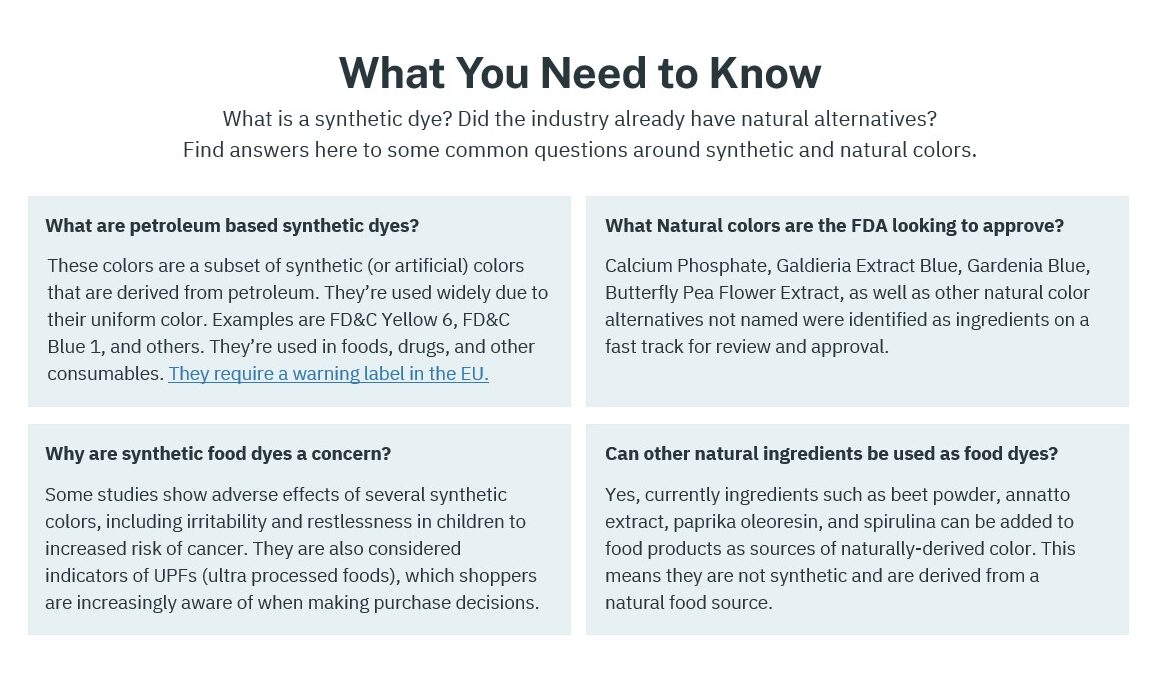
Shades of Change for Artificial Colors
While shoppers might be the most familiar with the FD&C Red No. 3 ban on the horizon, they’re already purchasing fewer products containing other petroleum-based synthetic colors.
This significant drop across all channels is indicative of the white-space opportunity and market readiness of the average shopper for more better-for-you choices.
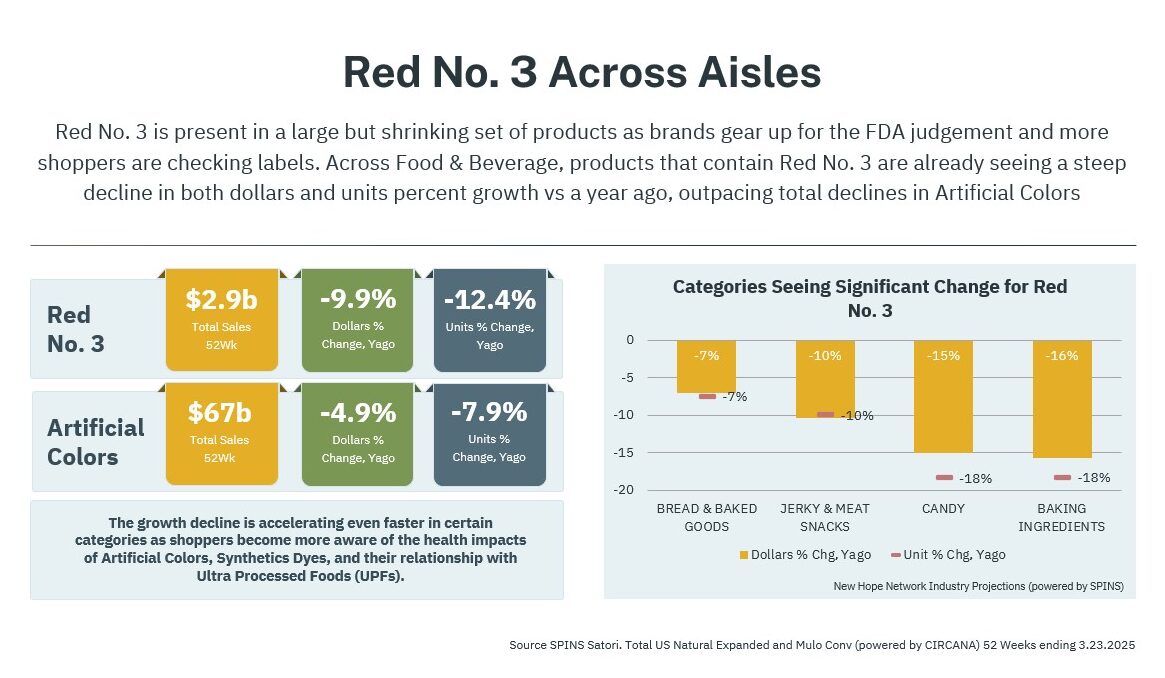
A Natural State of Mind
When looking for alternatives to artificial ingredients, shoppers increasingly turn to naturally positioned products. The natural channel continues to rise across categories, with strong projections for the future. Keeping up with this growing demand is vital as growth continues to push towards more clean-label and better-for-you options.
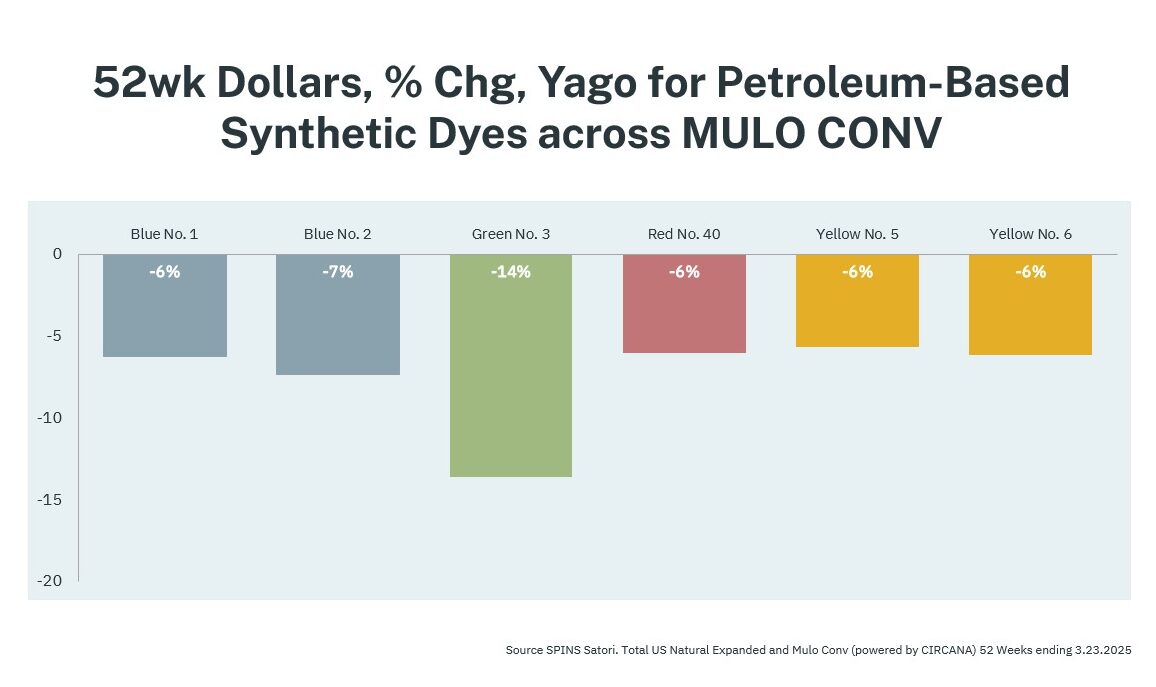
Shoppers aren’t just shifting away from artificial colors. Some of the largest disruptors and innovators of the past decade differentiated themselves with a steadfast ethos focused on a more comprehensive clean ingredient concept, unlocking the power of clean labels in categories from soda and candy to supplements and mac & cheese.
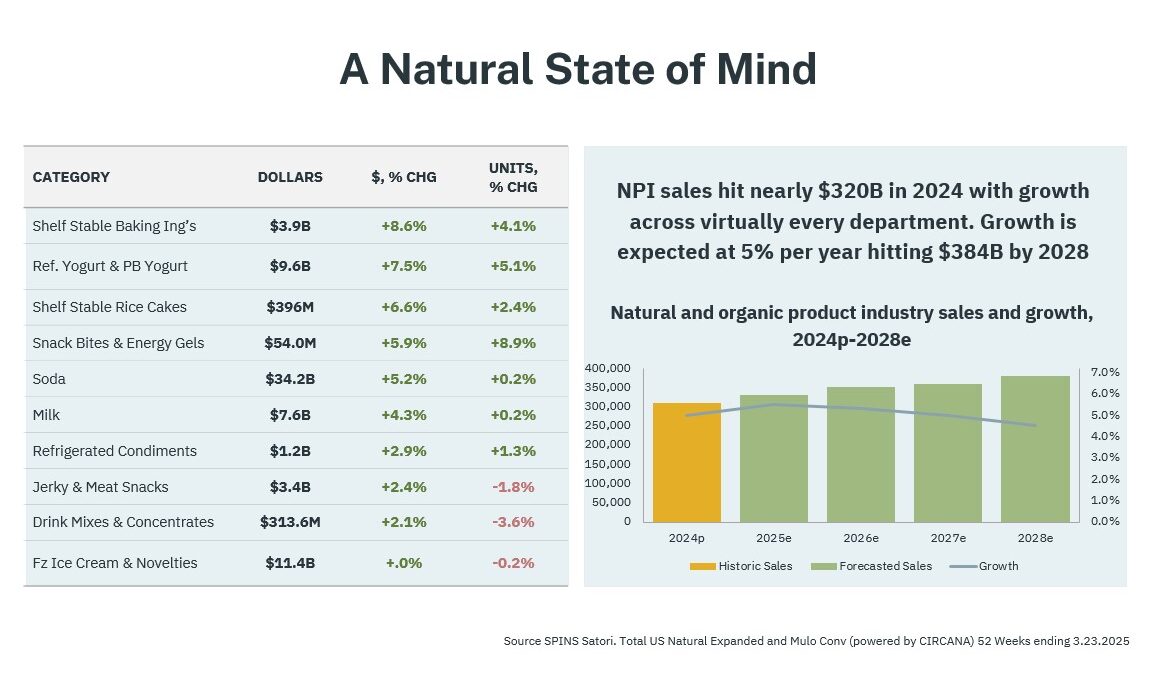
Whether food regulations will continue to evolve is unknown. As the food landscape continues to shift, we can be confident in one thing: Shoppers want to eat food that tastes delicious, nourishes their bodies, and reflects their priorities and values. Staying one step ahead of these growing demands is pivotal in maintaining trust and ensuring you’re prepared for the future.


